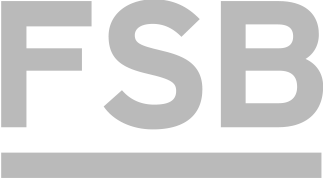International Exchange
Course details
Student Mobility > Programmes and Courses > Courses in English > Course detailsAircraft Systems and Equipment II
- Teaching:
- ECTS:
- Level:
- Semester:
- Prerequisites:
- There are no prerequisites for this class.
- Load:
Lectures Exercises Laboratory exercises Project laboratory Physical education excercises Field exercises Seminar Design exercises Practicum 30 7 0 0 0 8 0 0 - Course objectives:
- Understanding of working principles of aircraft instruments and their role in different aircraft operations.
- Student responsibilities:
- Grading and evaluation of student work over the course of instruction and at a final exam:
- continuous, multilevel testing of knowledge and developed understanding
- Methods of monitoring quality that ensure acquisition of exit competences:
- analysis of written colloquia - analysis of nonstructured classes" discussions
- Upon successful completion of the course, students will be able to (learning outcomes):
- describe and set the instruments required in a given aircraft, - understand, describe and measure flows of mass, energy and information between the aircraft instrument and other systems - competently conduct all predicted engineering tasks related to aircraft instruments
- Lectures
- 1. Introductory definitions, historical review.
- 2. Aircraft instruments - general guidelines.
- 3. Aircraft instruments - specific guidelines.
- 4. Aircraft instruments - elements.
- 5. Aircraft instruments - relations.
- 6. Flight instruments - theoretical background.
- 7. Flight instruments - basic group of instruments.
- 8. Flight instruments - overview of different versions.
- 9. Navigation instruments - theoretical background.
- 10. Navigation instruments - basic group of instruments.
- 11. Navigation instruments - overview of different versions.
- 12. Integrated instruments.
- 13. Integrated data collection and processing.
- 14. Metrological characterization of aircraft instruments.
- 15. Guidelines for development of aircraft instruments.
- Exercises
- 1. Examples of instruments structure.
- 2. Examples of instruments structure.
- 3. Examples of interactions between the environment and instrument.
- 4. Examples of interactions between the environment and instrument.
- 5. Practical modeling of aircraft instruments.
- 6. Practical modeling of aircraft instruments.
- 7. Practical work on flight instruments.
- 8. Practical work on flight instruments.
- 9. Practical work on flight instruments.
- 10. Evaluation of flight instruments.
- 11. Practical work on navigation instruments.
- 12. Practical work on navigation instruments.
- 13. Practical work on navigation instruments.
- 14. Evaluation of navigation instruments.
- 15. Evaluation of integrated instruments
- Compulsory literature:
- Moir, I. i Seabridge, A.: Aircraft Systems, 3rd ed. Wiley, 2008,
Pallett, E.H.J.: Aircraft Instruments. Principles and Applications. 2nd ed. Pitman, 1981,
Spitzer, C.R.: Avionics - Development and Implementation, 2nd ed. Taylor, 2007. - Recommended literature:
- -






